Cast iron vs enameled cast iron skillet — which is better?
We break down the difference between cast iron and enameled cast iron
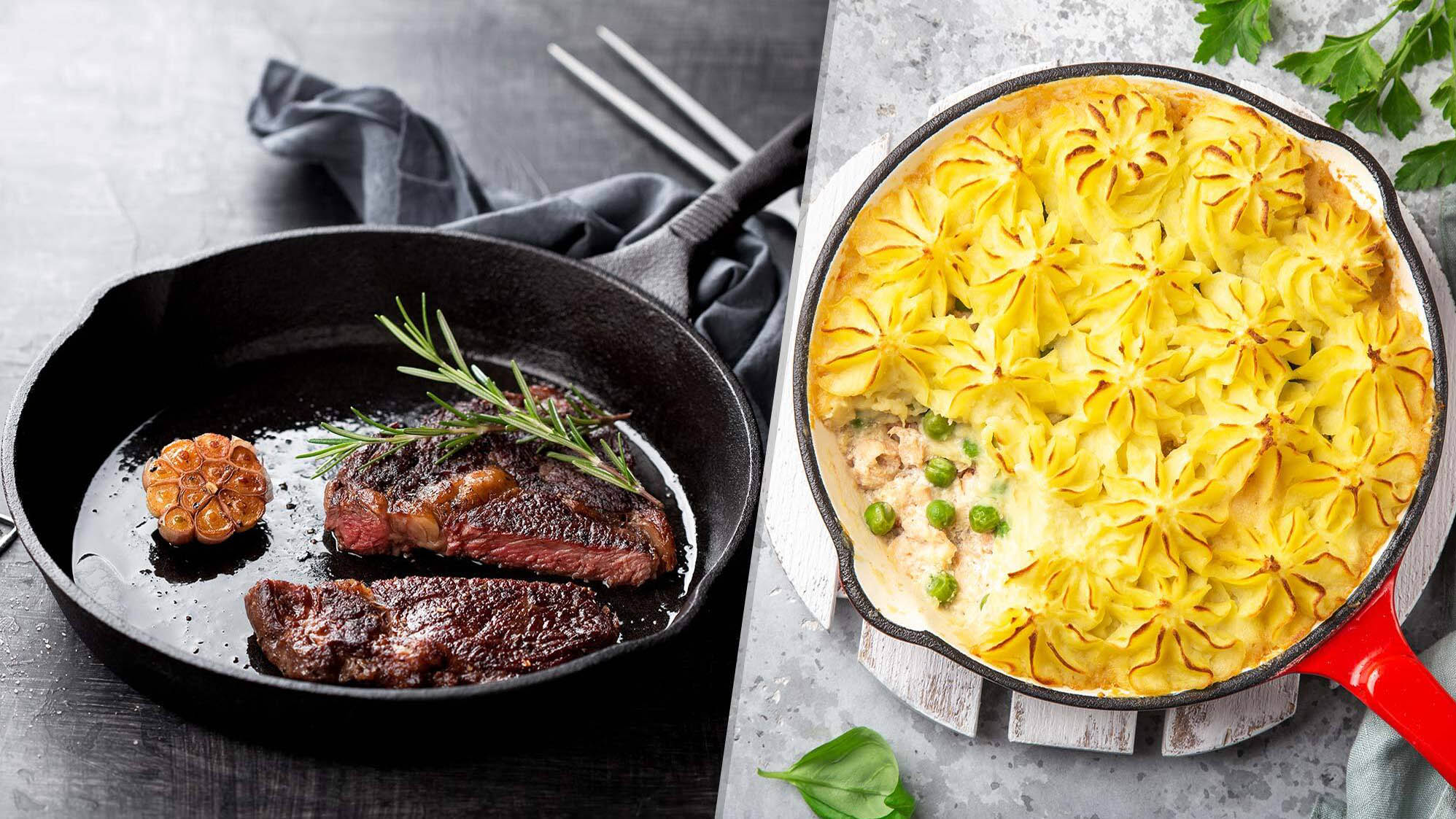
There’s no cookware quite so handy as a cast iron skillet. It provides a unique sear, flavor and quality of cooking, which no other material can achieve. But, you should know that there are actually two types of cast iron skillet available, which will affect the qualities of the pan as well as the final performance. That means, even if you get one of the best cast iron skillets, you could choose the wrong type and ruin your overall experience.
Cast iron skillets actually fall into two categories — traditional and enameled. Each comes with its benefits and drawbacks, and when pitted against each other it can be difficult to choose. That’s why we’ve pulled together this comprehensive guide to break down the differences and help you decide.
So when it comes to cast iron vs enameled cast iron skillets, you will know which is best for you.
Whichever type you choose, just make sure you avoid these 5 mistakes you’re making with your cast iron skillet. Plus, here are 6 foods you should never cook in a cast iron skillet.
Cast iron vs enameled cast iron skillet — what’s the difference?
Both types of pan are constructed from cast iron — the difference lies in their finish. Traditional cast iron is just that: cast iron from its core to the surface. It’s what you traditionally imagine cast iron to look like; a black, heavy skillet with a layer of seasoning on top.
Enameled cast iron, on the other hand, has a layer of enamel on the surface to protect and contain the cast iron. In doing this, it can have a more colorful appearance, and a somewhat more glazed look as well. As you will see, depending on which type of cast iron you choose, you will get a substantially different experience from each pan.
The benefits of traditional cast iron
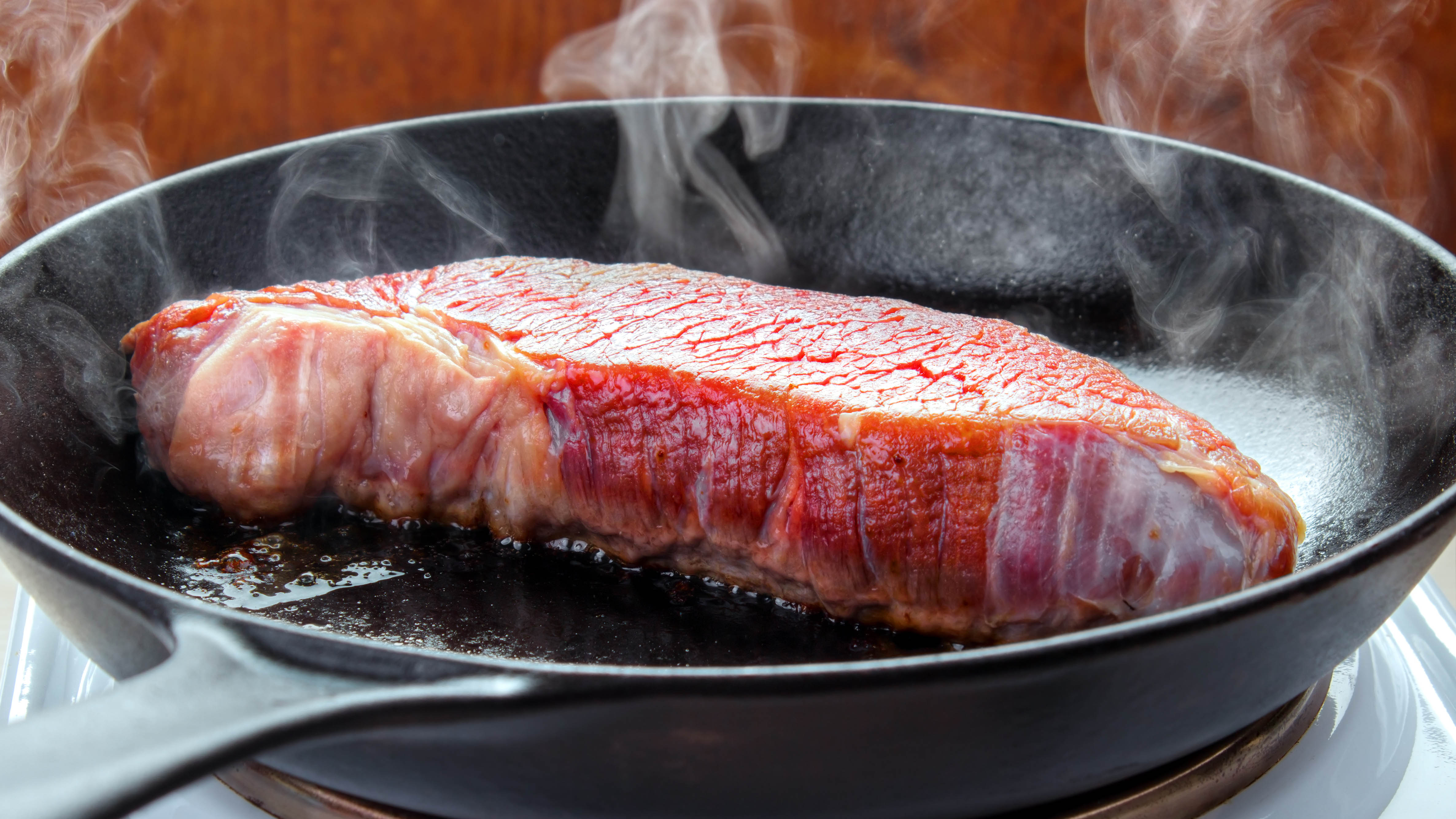
- Better longevity — Properly maintained, bare cast iron lasts a lifetime. Cookware won’t come more hardy than this. Even if it becomes subject to rust, this can easily be removed and the layer of seasoning re-applied. Here’s how to clean a cast iron skillet and remove rust for guidance.
- Naturally non-stick — With regular seasoning, your traditional cast iron will develop a natural non-stick surface. This makes it ideal for cooking all sorts of delicate foods off the bat, such as eggs or vegetables.
- Affordable options — Side-by-side, you will find that traditional cast iron comes at a cheaper price, with skillets starting from as little as $19. Enameled cast iron is generally sold by more premium brands by comparison.
- Stains are less obvious — Because of the dark finish, you’re less likely to see scorch marks on the underside as well as stubborn stains in the interior of these skillets, both of which can be very difficult to remove.
The drawbacks of traditional cast iron
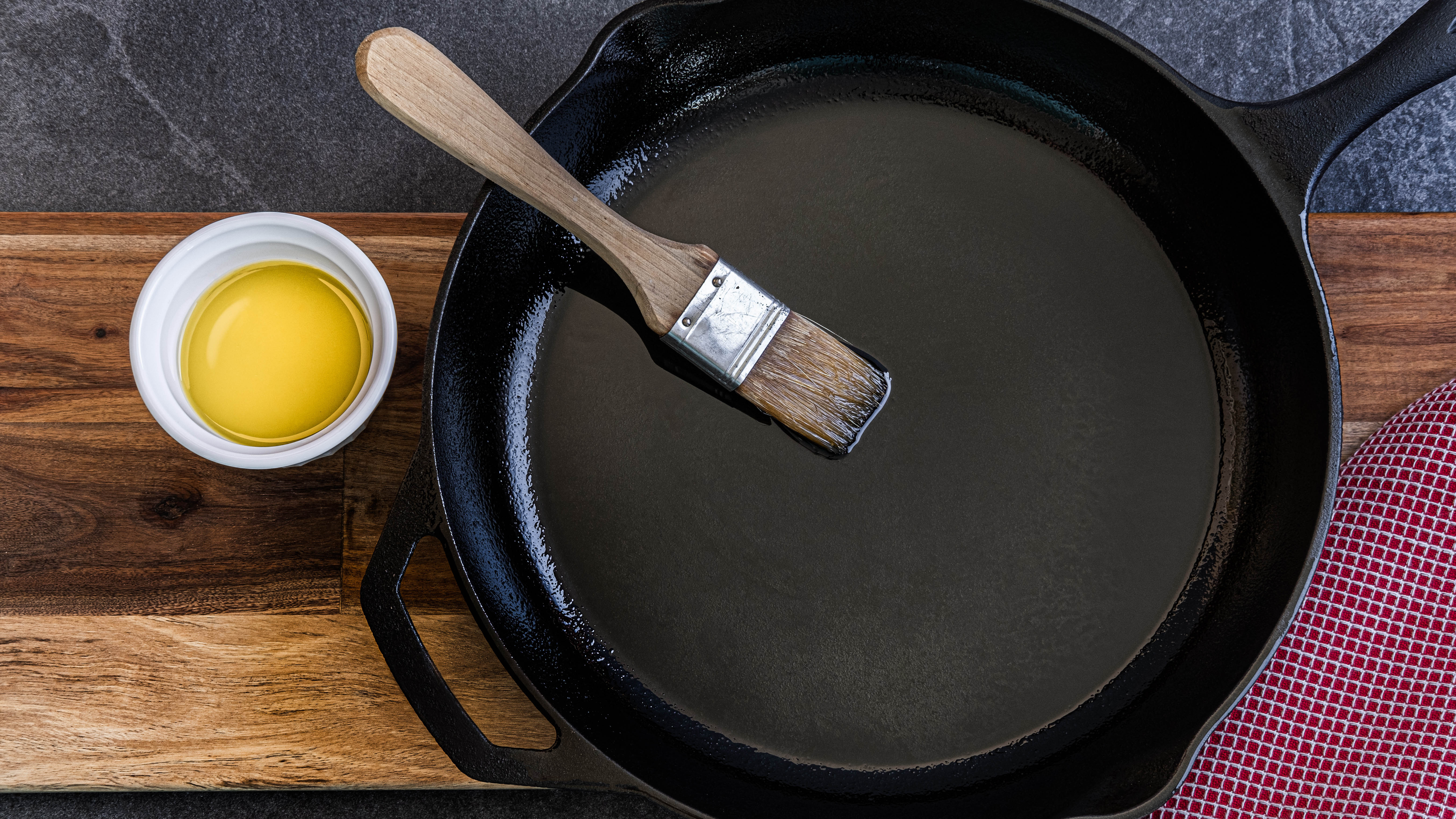
- Requires maintenance — If you opt for traditional cast iron, you’re going to need to learn how to season a cast iron skillet. It’s essential that bare cast iron is seasoned, otherwise it’s left vulnerable to rust. Add to that, food will stick when you try to cook in it. You should season a cast iron skillet 2-3 times a year, and apply oil to it after each use.
- More effort to clean — Naturally, traditional cast iron requires more effort to clean, particularly because the pitted surface can trap foods easily. The layer of seasoning needs to be retained, and it can be vulnerable to harsh detergents as well as abrasive cleaning tools. Your cast iron also can’t be exposed to moisture for prolonged periods. That means, no dishwashers and no soaking. So, careful cleaning by hand, and thoroughly drying it out afterwards is your only option.
- No colors available — It sounds like a small qualm, but it’s still worth mentioning. Some people love the vibrancy and colors offered by enameled cast iron. Unfortunately, you wont get that with bare cast iron. This type of skillet just comes in standard black, and it will darken with regular use. But some do prefer this traditional appearance.
- More difficult to see as you cook — Another issue with the lack of color pertains to how easy it is to see while you cook. The interior of a traditional cast iron skillet is black, while enameled can be white or cream. With the latter you’ve got an easier view of what you’re cooking — and how well-cooked it is.
The benefits of enameled cast iron
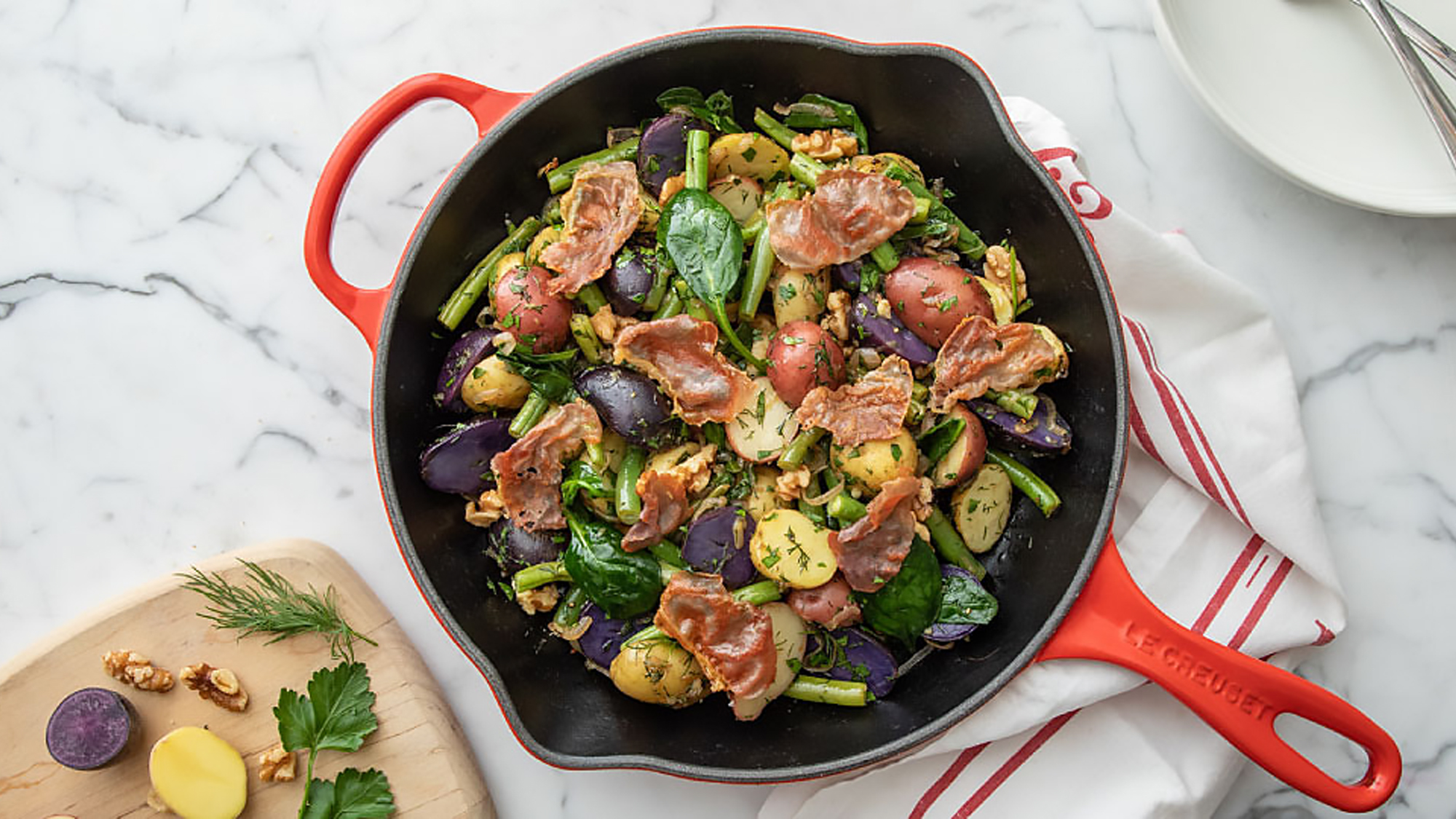
- Less maintenance — This is one of the biggest benefits when comparing these two types of cookware. You don’t need to season enameled cast iron — the enameled coating protects the cast iron core from rust, so long as it stays intact.
- Easy to clean — Another benefit is the ease of cleaning this enameled surface. It has a smooth, glazed finish compared to traditional cast iron, which makes it easier to wipe down. And because of this protective layer, you don’t have to worry so much about exposure to moisture. Some are even dishwasher safe, although we don’t recommend this because the abrasiveness of a dishwasher detergent can dull the enamel. Soaking is entirely possible though, and you don’t have to worry about food trapping on the surface so easily.
- Range of glossy colors available — If aesthetics mean a lot to you, and you want a skillet to match your kitchen décor, you will have more luck with an enameled finish. These typically come with vibrant and colorful exteriors. Brands such as Le Creuset and Staub have a huge selection to choose from.
- Easier to see as you cook — Speaking of colors, if you opt for an enameled cast iron skillet with a pale interior, you will have a much clearer view of you're cooking. Not just in terms of browning on the exterior, but also in terms of moisture.
The drawbacks of enameled cast iron
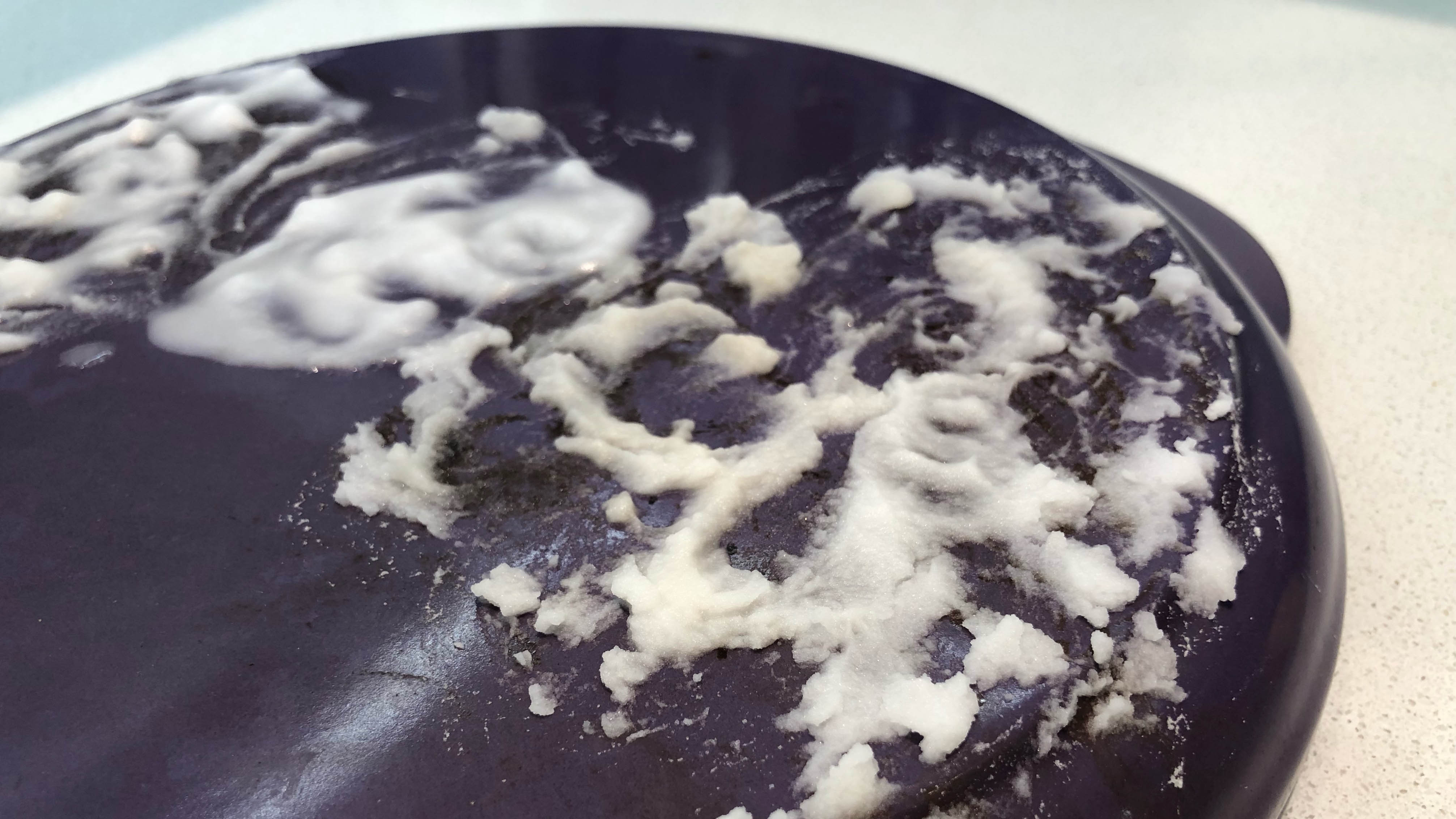
- More vulnerable — While cast iron is heavy and sturdy, the enameled exterior is not so much so. The enameled surface can be cracked or damaged if mishandled and can eventually dull over time as well, whether from cleaning, or regular use. Once this happens, the pan will become vulnerable to rust and the non-stick will fail. There’s no way to repair an enamel coating either, so all you can do is recycle the skillet. Sadly, there’s ultimately reduced longevity because of this coating.
- Requires oil — Without the layer of seasoning, enameled cast iron will lack the non-stick finish of traditional cast iron. That means, you’re going to have to apply a good amount of oil with each use. Otherwise, you could end up cooking a mess.
- Generally more expensive — These pans are generally sold by more premium brands such as Le Creuset and Staub, so naturally you’re likely going to pay more for them. Although some brands, such as Hamilton Beach is introducing more affordable options to bridge the gap between the two.
- Stains can be more obvious — Unfortunately, with a more colorful exterior comes more obvious scorch marks, particularly on the underside. With regular use, your spotless skillet will soon look worse for wear and will require some elbow grease to get it looking like new again. Although, with some baking soda and persistence, this can be rectified.
Cast iron vs enameled cast iron skillet — which is better?
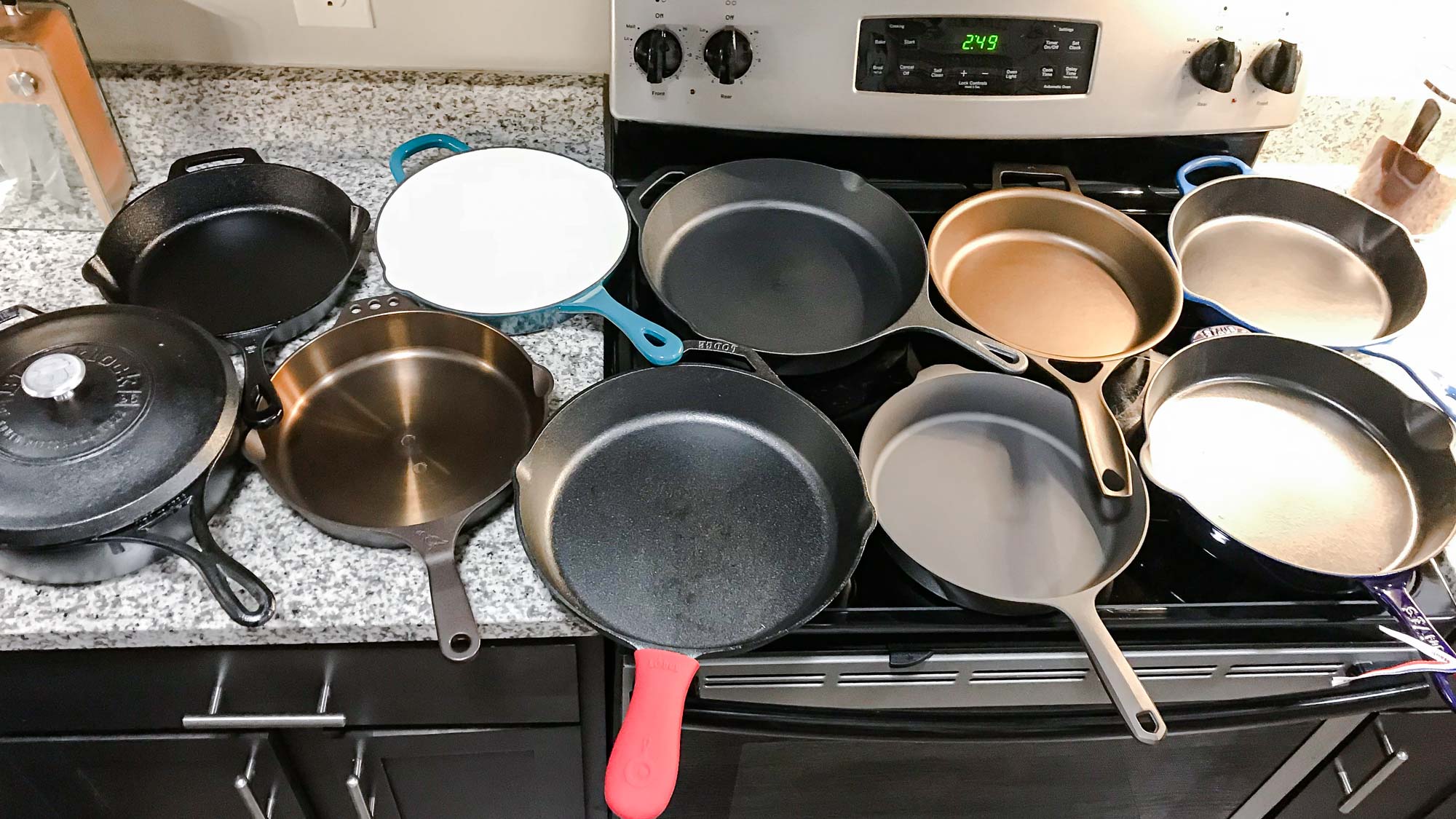
The answer to this question is entirely down to your preferences. Each has an even amount of good and bad points. Traditional cast iron offers greater durability, affordability and convenience in terms of the non-stick coating. While enameled cast iron is more easy to clean, and doesn’t require seasoning, making it easier to maintain.
Experts, such as Ben Rayl, chef and food blogger at Comfortable Food, would recommend bare cast iron for regular use, while enameled is preferable for occasional use.
In the end, it comes down to what you value and whether you take joy in the traditional maintenance of traditional cast iron. Whichever you choose, the results are guaranteed to be delicious.
You might also be interested in reading I tried the Amazon Basics Dutch Oven — here's what I've learned.
More from Tom's Guide
Sign up to get the BEST of Tom's Guide direct to your inbox.
Get instant access to breaking news, the hottest reviews, great deals and helpful tips.

Katie Mortram used to be a Homes Editor for Tom's Guide, where she oversaw everything from kitchen appliances to gardening tools, as well as smart home tech. Specializing in providing expert advice for cleaning and home manintenance, she now works as Household Advice Editor for Good Housekeeping.
